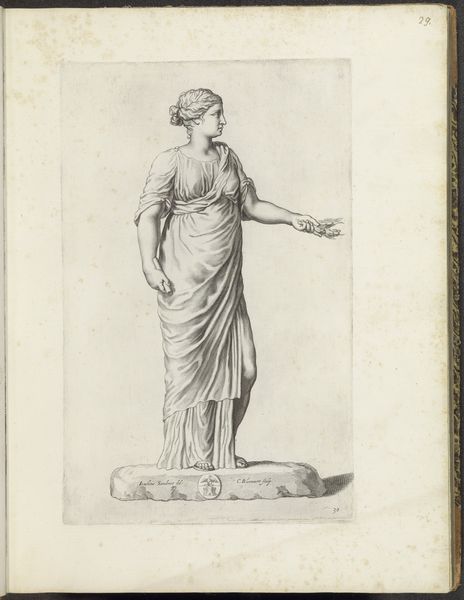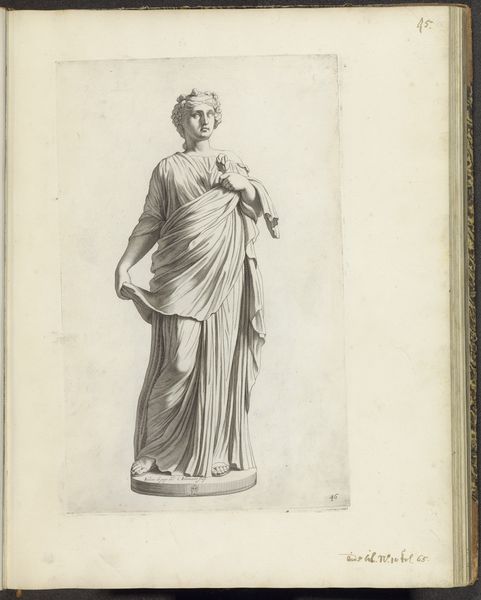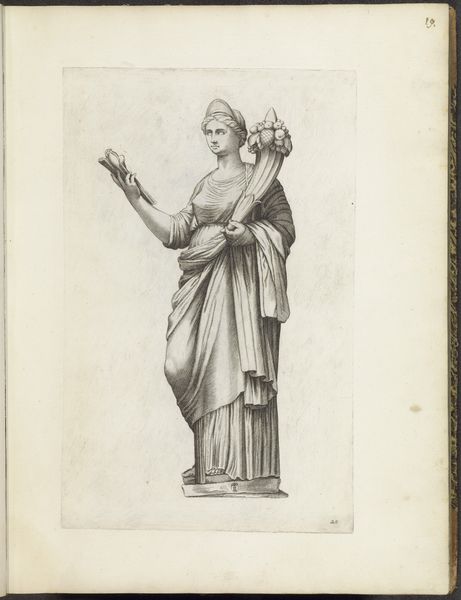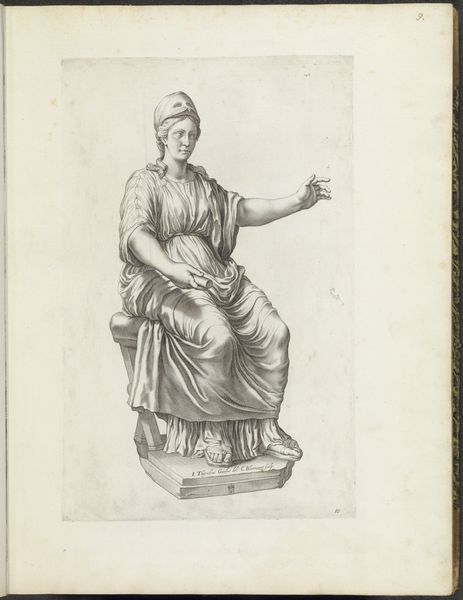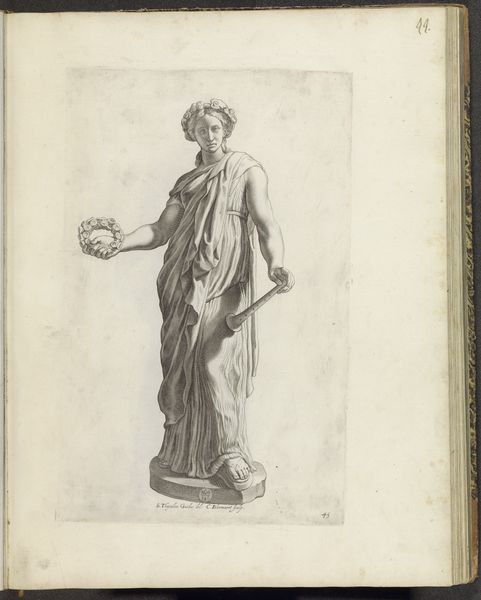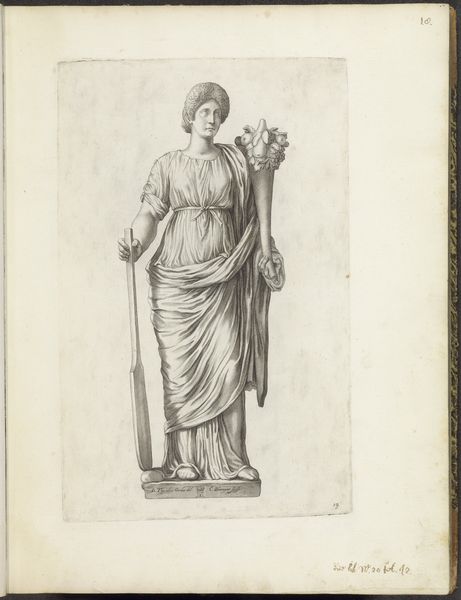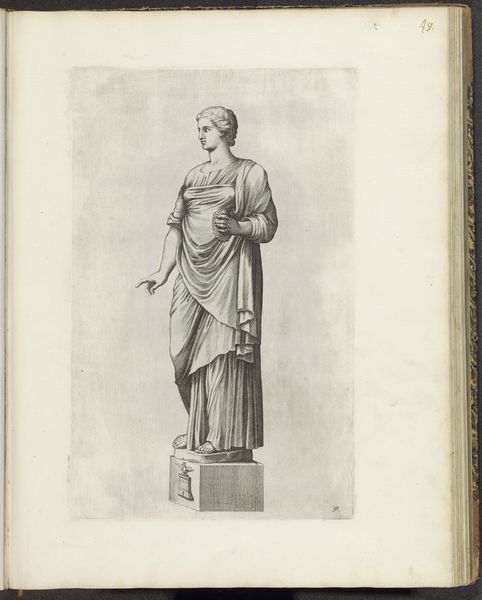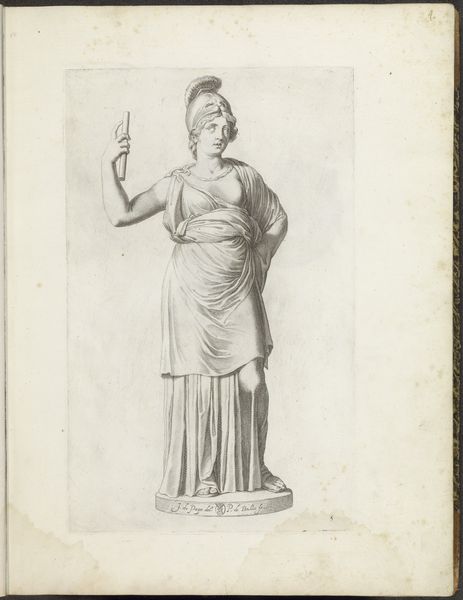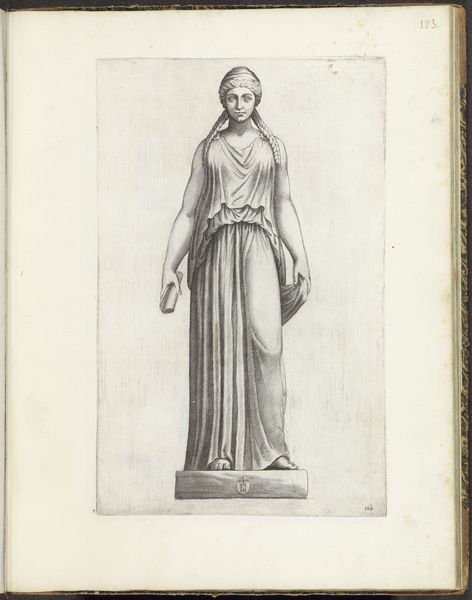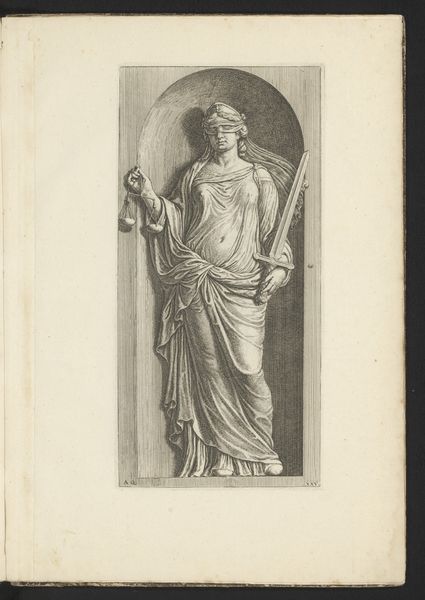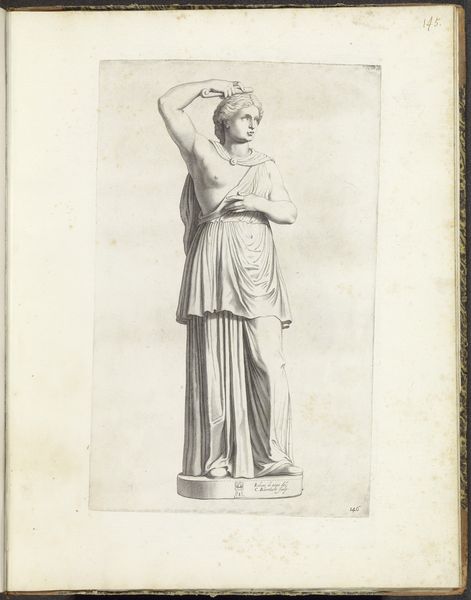
print, engraving
#
portrait
#
allegory
#
baroque
# print
#
classical-realism
#
figuration
#
history-painting
#
academic-art
#
engraving
Dimensions: height 378 mm, width 237 mm
Copyright: Rijks Museum: Open Domain
Curator: Standing before us is the engraving "Statue of Ceres as Queen," a piece crafted between 1636 and 1647, attributed to Cornelis Bloemaert and held in the Rijksmuseum collection. The scene presents a dignified, standing female figure on a plinth. It’s striking, isn’t it? Editor: Yes, indeed. My first impression is of controlled abundance. It’s carefully etched, emphasizing drapery and form. What kind of statement does it make? Curator: This depiction connects Ceres to notions of leadership and control, reframing traditional representations of female divinity in ways that echo questions around power and agency during the baroque era. How does it speak to the societal perceptions of women during that period? Editor: Let’s look at materiality, Cornelis Bloemaert used engraving as a means to reproduce an existing form—a statue. This inherently connects the work to processes of dissemination and value. Is Bloemaert commenting on the means through which power and prosperity were communicated and circulated, rather than simply portraying it? Curator: The choice to portray Ceres, the Roman goddess of agriculture, wearing a queen’s crown can also be analyzed as a strategy to legitimize the female divine by combining pagan symbols with monarchical power. The work operates within a complex intersection of classical imagery and Baroque sociopolitical agendas. Editor: Exactly, think about what is represented and what's omitted: we have a powerful symbol representing agriculture and wealth and a queen representing royalty and leadership but what about the laborers who physically worked the land and helped procure the materials for said wealth. What are we not being shown about that process? Curator: Right, it encourages a deeper look into gender roles within hierarchies of power and symbolic value during its time, offering insights relevant to feminist perspectives today. Editor: Seeing how you explore beyond the artwork itself and its position regarding a broader social discourse. Thank you for giving me this interesting context! Curator: The engraving's formal and symbolic aspects are undeniably interconnected, each illuminating various dimensions of its cultural moment. Thanks to your input on its materiality and process, too!
Comments
No comments
Be the first to comment and join the conversation on the ultimate creative platform.
